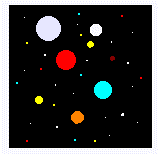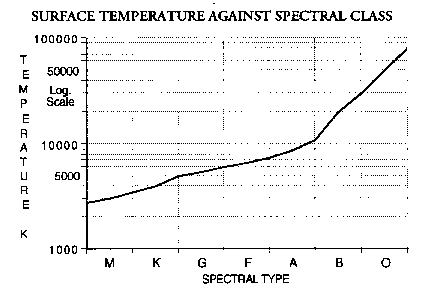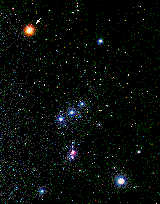 COLOUR
COLOUR
 COLOUR
COLOUR
It might seem strange that a star's colour can be used to help work out its distance, but this is a standard method. In fact, when you look at the night sky, the stars seem to be pretty much the same colour - white. The colours are extremely faint and hard to see in dim light. They are best seen when starlight is passed through a prism or a diffraction grating . The light is smeared out into its component colours. The resulting spectrum is a light fingerprint which is characteristic of the star's surface temperature (see graph).


The constellation of Orion contains a cool red supergiant - Betelgeux, top
left and a hot blue supergiant - Rigel, bottom right.
Astronomers divide stars into seven types according to their spectrum: O,B,A,F,G,K,M. The order of these letters can be easily remembered by the mnemonic - Oh be a fine girl kiss me! O stars are the hottest (50 000 degrees C) and are blue. M stars are the coolest (3 000 degrees C) and are red.
* Click here to find out how a star's temperature can be used to find its distance